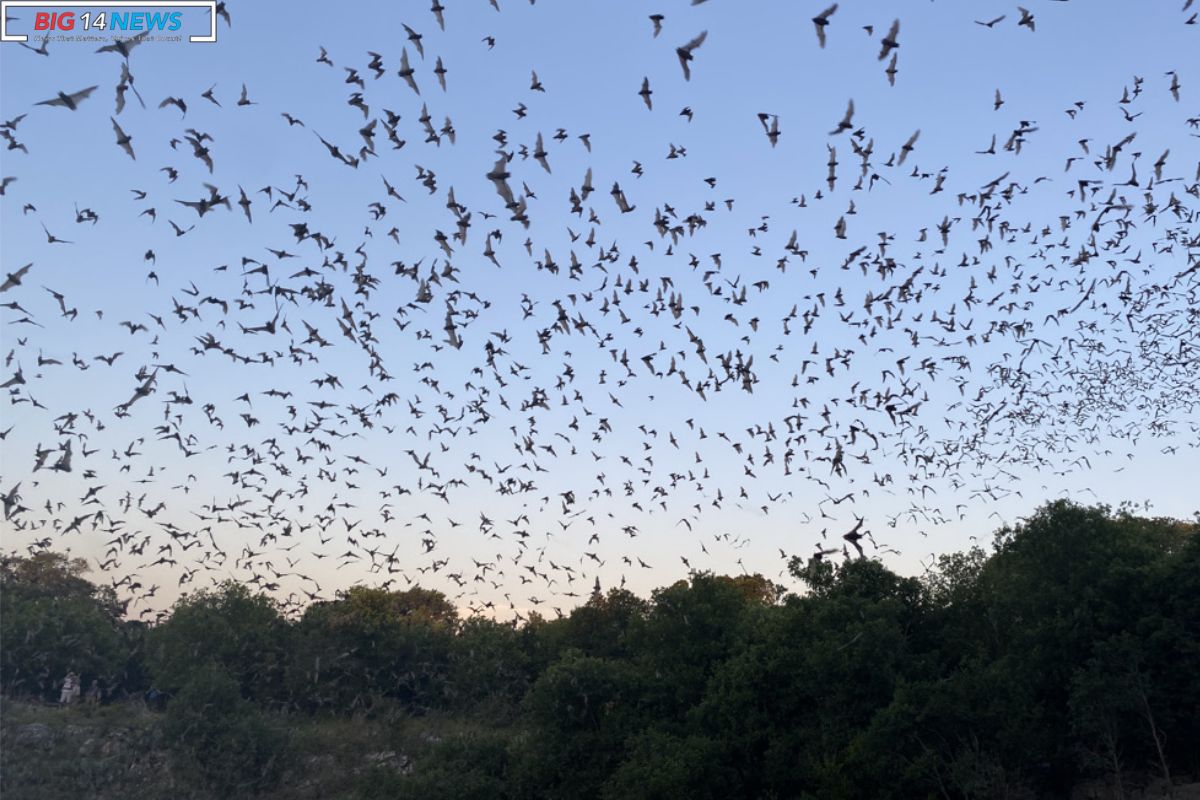Mexican Free Tailed Bats: At sunset, residents of Bracken Cave Preserve in Texas Hill Country emerge to perform a vital task. Twenty million Mexican Free-tailed bats, crucial to our environment, inhabit this cave.
Our team got to visit a cave and witness something incredible.
Fran Hutchins, in charge of bat conservation at Bracken Cave Preserve, says bats come out for dinner and hunt up to 60 miles away at night.
In mid-February, Mexican Free-tailed bats make a fantastic journey from Mexico to the Hill Country.
They come here and have babies. Around Thanksgiving or early November, when the first cold snap hits, they start their trip back to Mexico,” Hutchins says.
Millions of bats create a “batnado” as they fly out of the cave. This move prompts many bats in the colony to fly into the night sky.
The bats fly out of an 80-foot-deep sinkhole in a counterclockwise vortex. It’s a “bastinado” in a friendly way, says Hutchins. This vortex brings bats together for group hunting.
These bats eat over 150 tons of insects each night. Many insects are crop pests.
They eat pests, which is helpful in farms. By naturally eliminating pests, farms save money, reduce pesticide use, and maintain clean water. It’s a win-win for farmers and bats, as Hutchins points out.
Mexican Free-tailed bats aren’t the only bats in our area. Jeremiah McKinney, a wildlife biologist, studies bats at Natural Bridge Caverns to identify local species.
McKinney says, “We’ve recorded about 16 species at the ranch, showing the bat diversity in our area.”


ALSO READ: Amazon Driver Faces Venomous Attack by Rattlesnake: in Florida A Terrifying Encounter with Wildlife
Unlike Mexican Free-tailed bats, many of these species live in trees and face challenges such as development and drought.
“Urbanization and droughts force bats to travel longer distances for water, reducing diversity as they struggle to survive,” McKinney explains.
Texas has 32 bat species, each with a unique role in our environment. As green land decreases, so does their habitat.
When we were there, the bats came out early. This may indicate the need for more extended foraging periods.
Rain affects bat food. Our crops are struggling due to prolonged temperatures exceeding 100 degrees. This makes bats leave earlier in the evening. Hutchins says that more rain helps crops grow, making it easier for bats to find food.
The winds guide bats on their hunt for food. They go to Pleasanton before returning home to rest, doing this nightly.
Being here is an unmatched experience. Hutchins says, “You can experience the bats in just over three hours.”
Also Read: San Antonio Truck Parking Dilemma: Balancing City Streets and Trucking Needs

